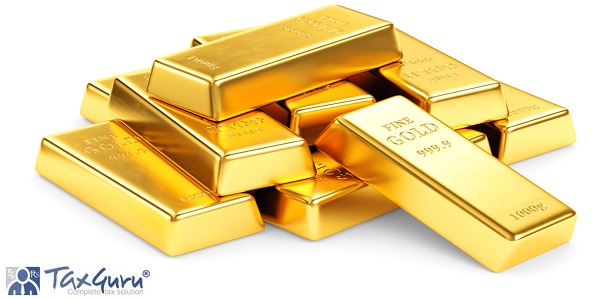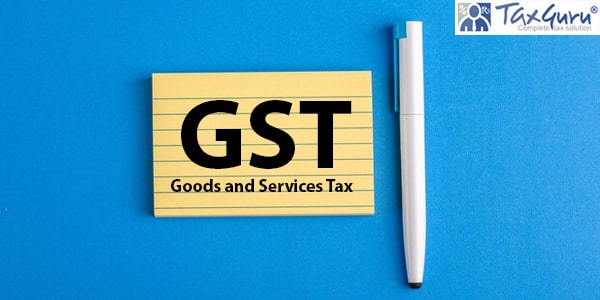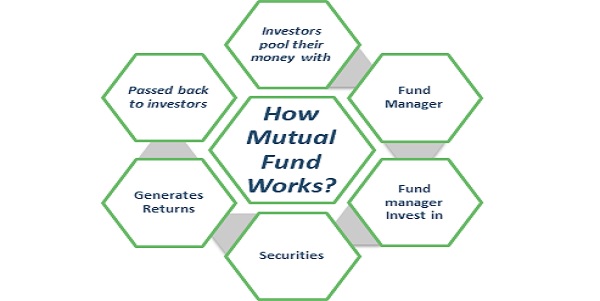 Buy-back is one of the important provisions in the Companies Act, 2013 (“the Act”) which enables a company to purchase its own shares or other specified securities with inherent benefits to the company and its shareholders. A program of buy-back is resorted to by a company to enable it to:
Buy-back is one of the important provisions in the Companies Act, 2013 (“the Act”) which enables a company to purchase its own shares or other specified securities with inherent benefits to the company and its shareholders. A program of buy-back is resorted to by a company to enable it to:
- Achieve the desired capital structure;
- Return surplus cash to shareholders/security holders;
- Ensure the underlying value of shares/security is properly reflected;
- Control unwarranted fall in share / security price
Source of funds
Buy-back can be made out of :
i) free reserves;
ii) securities premium account or
iii) proceeds of the issue of any shares or other specified securities.
Provided that no buy-back of any kind of shares or other specified securities shall be made out of the proceeds of an earlier issue of the same kind of shares or same kind of other specified securities.
Modes of Buy-back
(a) Existing shareholders or security holders on a proportionate basis;
(b) Open market;
(c) Purchasing the securities issued to employees of the company pursuant to a scheme of stock option or sweat equity.
Pre-requisites for Buy-back
1. The buy-back is authorized by Articles of Association of the Company.
2. A special resolution has been passed by the company authorizing buy-back. However if the buy-back is 10% or less of the Paid-up Capital and Free Reserves, the board resolution will suffice.
3. The buy-back is 25% or less of the aggregate of paid up capital and free reserves of the company. Provided that the buy-back of equity shares in any financial year shall not exceed 25% of its total paid up equity capital in that financial year.
4. The Ratio of the aggregate of secured and unsecured debts owed by the company is not more than twice the paid-up capital and its free reserves after buy-back.
5. All the shares or other specified securities for buy-back are fully paid up.
Explanation I.— “Specified Securities” includes employees’ stock option or other securities as may be notified by the Central Government from time to time.
Explanation II.— “Free Reserves” includes securities premium account.
Other Important Provisions
1. Every buy-back should be completed within 1 year from the date of passing of Special Resolution or Board Resolution, as the case may be.
2. After completion of buy-back the company cannot make any further issue of same kind of shares within a period of six months. However, there is no prohibition for issue of bonus shares or issue of shares in the discharge of subsisting obligations such as conversion of warrants, stock option scheme, sweat equity or conversion of preference shares or debentures into equity shares.
3. The company which has been authorized by a special resolution shall, before the buyback of shares, file with the ROC a letter of offer in Form No. SH. 8 signed by not less than two directors of the company, one of whom shall be the managing director, where there is one.
4. File with the ROC a declaration of solvency signed by at least two directors of the company, one of whom shall be the managing director, if any, in Form No. SH. 9 and verified by an affidavit to the effect that the Board of Directors of the company has made a full inquiry into the affairs of the company as a result of which they have formed an opinion that it is capable of meeting its liabilities and will not be rendered insolvent within a period of one year from the date of declaration adopted by the Board.
5. The offer for buy-back shall remain open for a period of not less than fifteen days and not exceeding thirty days from the date of dispatch of the letter of offer.
6. No offer of Buy-back shall be made within 1 year from the closure of preceding offer of Buy-back.
7. Extinguish and physically destroy the shares or securities so bought back within seven days of the last date of completion of buy-back.
8. Maintain a register of the shares or securities so bought, the consideration paid for the shares or securities bought back, the date of cancellation of shares or securities, the date of extinguishing and physically destroying the shares or securities in Form No. SH. 10.
9. File with the ROC a return in Form No. SH. 11 within thirty days of the completion of Buy-back.
Prohibition for Buy-back of Shares
A company shall not purchase its shares or other specified securities:
a) through any subsidiary company, including its own subsidiary company;
b) through any investment company or group of investment companies;
c) if a default, is made by the company, in the repayment of deposits accepted, interest payment thereon, redemption of debentures or preference shares or payment of dividend to any shareholder, or repayment of any term loan or interest payable thereon to any financial institution or banking company. However, buy-back is not prohibited, if the default is remedied and a period of three years has lapsed after such default ceased to subsist.
d) if it has not complied with the provisions of sections 92, 123, 127 and section 129 of the Companies Act, 2013.
BUY-BACK: PRACTICAL ASPECTS
Hypothetical Balance Sheet of ABC Ltd. as on 31.03.2016
| Pre Buy-back | Post Buy-back | |
| (Rs.) | (Rs.) | |
| Shareholders’ Fund | ||
| Equity Share Capital
(Nominal Value Rs. 100 per share) |
70,00,00,000 | 57,50,00,000 |
| 10% Preference Share Capital | 10,00,00,000 | 10,00,00,000 |
| Reserves & Surplus | ||
| Free Reserves | 30,00,00,000 | 15,00,00,000 |
| Securities Premium | 10,00,00,000 | 10,00,00,000 |
| Revaluation Reserve | 15,00,00,000 | 15,00,00,000 |
| Capital Redemption Reserve | – | 12,50,00,000 |
| Non-current liabilities | ||
| Debt | 1,85,00,00,000 | 1,85,00,00,000 |
| Current Liabilities | 14,50,00,000 | 14,50,00,000 |
| Total | 3,34,50,00,000 | 3,19,50,00,000 |
| ASSETS | ||
| Non-Current Assets | 2,90,50,00,000 | 2,90,50,00,000 |
| Current Assets | ||
| Inventory | 14,50,00,000 | 14,50,00,000 |
| Trade Payables | 4,00,00,000 | 4,00,00,000 |
| Cash and Bank | 25,50,00,000 | 10,50,00,000 |
| Total | 3,34,50,00,000 | 3,19,50,00,000 |
Determining the Number of Shares to be Bought Back
To determine the maximum number of shares to be bought back, compliance of all the following test is required. The least the number of shares (computed under steps 1 to 4) only can be bought back.
Step 1: Paid-up Capital and Free Reserves Test:
(Capital (Equity + Preference) + Free Reserves) X 25%
Buy-back Price
= (80 Crore + 30 Crore) X 25%
120
= 22,91,667 Shares
Step 2 : Paid-up Equity Capital Test
No. of paid-up equity shares X 25%
= 70,00,000 X 25%
= 17,50,000 shares
Thus, the shares to be bought should be brought down to 17,50,000 instead of 22,91,667.
Step 3 : Debt-Equity Test
After buy-back of shares the debt-equity ratio should not exceed 2:1, if it exceeds the standard of 2:1, the amount of buy-back of shares may be brought down to the level of 2:1. Under step 2, the number of shares to be buy-back has been determined as 17,50,000. Here the ratio comes to 2.08:1, therefore, the number of shares to be bought should be brought down to 15,41,666 shares as computed below:
Debt = Rs. 185 crores (given)
Equity required to bring down the debt equity ratio to 2:1, 185 / 2 = 92.5 crores
Existing Equity and Pref. Capital = Rs. 120 crores
Required Equity = Rs. 92.50 crores
Value wise maximum amount for which shares can be bought = Rs. 120 – 92.50 crores = Rs. 18.50 Crores
Buy-back Rate Rs. 120 per share
Number of shares to be bought back = Rs. 18.50 crores divided by Rs. 120/-
= 15,41,666/- Shares
Thus, the shares to be bought should be brought down to 15,41,666 instead of 17,50,000.
Post buy-back Debt Equity Ratio:
Debt
Shareholders’ Fund
= 1,85,00,00,000 = 2:1
92,50,00,000
Step 4 : Liquidity Test
It should also be ensured that there should be adequate funds with the company to buyback 15,41,667 shares. The company cannot avail loans etc. to be used for buy-back. The bank balance in the balance sheet of the company is Rs. 25,50,00,000/-. Naturally the whole of it cannot be utilised to finance the buy-back. For working capital the company should have some liquid funds. Suppose
Cash Available for buy-back
Buy-back Price
= 15,00,00,000 = 12,50,000 Shares
120
Even after buy-back the company will be left with a bank balance of Rs. 10,50,00,000/- which might be sufficient for meeting the working capital needs. The post buy-back current ratio would be 2:1 and quick ratio will be 1:1. Finally, the number of shares to be bought settle down to 12,50,000 shares.
Caution to Investors
(i) If the trend of the share price movement immediately before the buy-back is on the rise, then the prima facie assumption is that the promoters are trying to play tricks and the buy-back offer should be looked at with suspicion.
(ii) Investors should look at the debt-equity ratio. If the company has huge debts, then it is unlikely that it will have surplus cash.
(iii) Companies which have just come to the capital markets or which have just completed their IPO are not good companies for buy-back.
(iv) When the Board/shareholders have passed the respective resolutions as the case may be with lot of publicity empowering the Board to buy-back whenever allowed, then there is enough scope that it should be looked with suspicion as anybody with genuine intention of buy-back shares to enhance the shareholders’ wealth would try to do so with minimum publicity so that the share price does not flare up due to speculation in the market.
(For any query or question or suggestions Author can be reached at E-mail: vks.gupta29@gmail.com)





















Is it Compulsory for the company to maintain Minimum General Reserve after the comp lit the Buy back, or/and is their any point required to consider After the complit the buyback
please provide legal provision to be consider after comp lit the buyback of shares
can anyone help me with back dated buy back of shares.